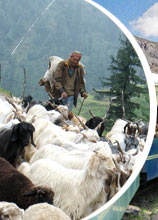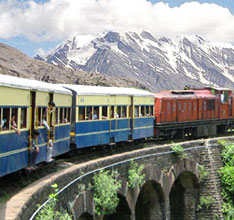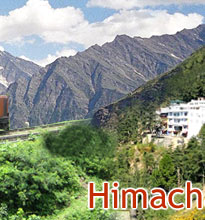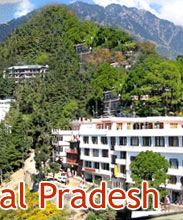There are a number of monuments in Himachal Pradesh,
comprising of colonial buildings, palaces and castles of the former
rulers, memorial sites and Buddhist monasteries. Viceregal Lodge in
Shimla, also known as 'Rashtrapati Niwas' deserves to be mentioned at
the top of the list of such monuments. It houses the Indian Institute of
Advanced Studies today. Other famous monuments in Himachal Pradesh are
Norbulinka Institute of Tibetan Culture, Lord Elgin's Memorial Maharaja
Palace of Chail, Rang Mahal of Chamba, Padam Palace of Rampur, Gurkha
castles and forts, etc.
War Memorial
One of the major attractions of Dharamsala, the War Memorial reminds us
of the post independence war heroes of Kangra district of Himachal
Pradesh. These martyrs lost their lives in the Indo-China war of 1962,
the Indo-Pak wars of 1947, 1965 and 1971 as well as the UN peace
operations. Situated amidst lush green forests, the war memorial stands
surrounded with narrow winding pathways and beautiful lawns.
Gurkha Castles
In the history of Himachal Pradesh, one finds a mention of the Gurkha
rulers also. Gurkhas gained control over some princely states of
Himachal and ruled them until 1815, when British drove them away from
the region.
Viceregal Lodge
One of the most famous landmarks of Shimla, the Viceregal Lodge
situated on the Observatory Hill and also known as the Rashtrapati Niwas
now. The building lies at a distance of just 2 km from the Himachal
State Museum.
Tabo Monastery
Tabo Monastery is situated in the Spiti Valley of Himachal Pradesh. The
great teacher and translator Rinchen Zangpo founded the monastery in 996
AD and till today, it holds the distinction of being the largest
monastic complex in the Spiti region.
Rang Mahal
Built by Raja Umed Singh in the mid-18th century, Rang Mahal is also
known as the 'Painted Palace'. It is situated at Chamba and was meant to
serve as the residence of the royal women. The influence of Mughal,
Colonial and Saracenic architectural style can be seen in its
construction.
Padam Palace
Situated at a distance of approximately 125 km from Shimla is Padam
Palace, one of the major attractions of Rampur. It once served as the
Winter Capital of the former princely state of Bushair. Raja Padam Singh
laid the foundation the palace on the left bank of River Satluj in the
year 1919.
Norbulingka Institute
Situated at a distance of 4 km from Dharamsala, Norbulinka Institute
has a mission to preserve and promote. It is a picture of old rural
Tibet with all its shady paths, wooden bridges, small streams and tiny
water falls, along with wooden carvings, Tibetan Thangka paintings,
Tibetan handicrafts and arts.
Chail Palace
Situated at an altitude of 2250 m, Chail is a very small but delightful
hill resort. One of its major attractions is the Chail Palace,
constructed by Maharaja Bhupinder Singh of Patiala in 1891, as his
residence.
Namgyal Monastery
Sonam Gyatso, the third Dalai Lama, founded Namgyal Monastery in the
year 1575. During that time, it was situated at the Potala Palace in
Tibet. Its purpose was to assist the Dalai Lama in his spiritual duties
and public religious activities.








